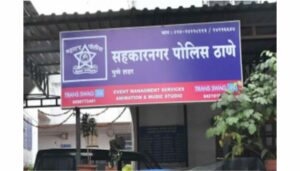Pune Real Estate: The Year That Was, And The Year Ahead
Kishor Pate, CMD – Amit Enterprises Housing Ltd.
2016 did not bring as much cheer to Pune’s real estate market as previous years had. Nevertheless, Pune outperformed Mumbai by between 20-25% in terms of overall sales. The highest-selling category in Pune was mid-range properties priced between Rs. 35-50 lakh within the city’s municipal limits and its nearby periphery, followed by lower budget housing on the outskirts priced between Rs. 15-30 lakh. The latter pricing category offered on the market saw some response; however, whether it sustainable is debatable.
The questions which bothered most buyers in 2016 were:
What are the hidden cost?
Does the location serve my purpose?
Will the project I am interested in be completed as per promised timeline?
Is the developer inherently RERA-compliant?
Due to these completely understandable apprehensions, reputed builders saw the most number of serious inquiries in 2016. It would not be an exaggeration to observe that the year saw developers being examined with microscopic scrutiny. There was clear evidence that Pune’s property buyers have become very aware of their rights, and that they can expect their interests to be protected by the upcoming RERA; promoters will not be able to dictate terms as they so far have.
However, irrespective of the potential protection that RERA will provide, buyers were more focused on the reputation of the builder than prices. This was a significant change of temperament among Pune’s traditionally price-sensitive consumers. It indicated that long-term investment value and growth now matters more to them than short-term savings.
More than ever before, the inherent value of sticking to players with an established track-record will make itself felt in 2017. When RERA becomes a nation-wide reality in mid-2017, Pune’s established developers with a good track record quality products and transparent dealings via official financial channels will emerge as dominant. Once the Real Estate Regulatory Bill kicks in, fraudulent builders will be pulled off the market, and there will be more clarity than ever before about the genuine opportunities that Pune’s real estate market offers.
For the entire year of 2016, Pune remained a buyers’ market and primarily end-user driven. Developers vied with each other for customers in most locations – a ‘competition’ in which only those with projects nearing completion emerged as clear winners. High buyer caution prevailed throughout the year with regards to pre-launches and under-construction projects in the earliest stages of development. With many projects offering ready-to-move options to buyers and investors, the thought of having to wait for 2-3 years before gaining possession simply failed to entice.
The locations which scored highest with buyers in 2016 were not the overpriced central locations, but those which offer good connectivity to Pune’s various workplace hubs while circumventing the steep price points of the city’s central areas. Most buyers had a firm list of must-haves to refer to:
Proximity to the city’s various workplace centers; good overall connectivity via roads and public transport
Rational property prices
Availability of good schools, affordable healthcare, shopping and entertainment
Market-proven reliability of developers’ brand.
In terms of location, Undri-Pisoli in Pune’s south-eastern sector was a clear favourite with buyers employed in the city’s Infotech sector and manufacturing industries, as all the requirements were available as above, Also Ambegaon in the south-western part saw a lot of conversions, thanks to its good connectivity to Mumbai as well as onward to Satara and Kolhapur.
Apart from the fact that these locations are extremely well-connected, they also drew demand because they have a good supply of completed projects by reputable developers. Fast-paced infrastructure deployment also helped bring these two locations to the top of the charts in 2016, and will continue to sustain their desirability in 2017.
Bhugaon, Keshavnagar and Manjri in the city’s eastern quadrant saw a lot of absorption because of overall access they provide to various key areas of the city. Though they are still emerging in terms of general infrastructure deployment, these are certainly locations to watch in the future.
In terms of general pricing, Pune saw a correction of 3-6% in property prices in most markets. Most developers rolled out additional schemes to attract buyers to their projects, with varying degrees of success. Construction-linked plans drew some interest, but the clear winners among such schemes were all-inclusive packages which included all statutory costs such as VAT, stamp duty and registration fees. Buyers showed a lot of preference for transparency in pricing, a decent saturation of in-project amenities and facilities, and developers whose trustworthiness was not in question.
2017 will be a year of significant and much-needed change for Pune’s property market. The Government’s demonetization initiative has kick-started a process of elimination of fly-by-night developers and the cash components in the transactions will come to an end- a process which the final implementation of RERA will bring to culmination. There will be a lot of consolidation throughout the year, with such players yielding whatever marketable land parcels and incomplete projects they hold to more established players.
2017 will not bring any further correction in Pune’s residential property prices, as demand is already returning in force to the city’s property market. Also, the fact that RERA will bring with it a significant additional financial burden on developers with regards to various statutory compliances, prices may go up towards mid-year.
Nevertheless, the year ahead will be favourable for property buyers in Pune. It will continue to be a buyers’ market, and the relationship between developers and buyers will see a major upgrade because buyers’ rights and interests will be well-defined and well-protected by the new Real Estate Regulatory bill. This is what the Government wants to achieve.





